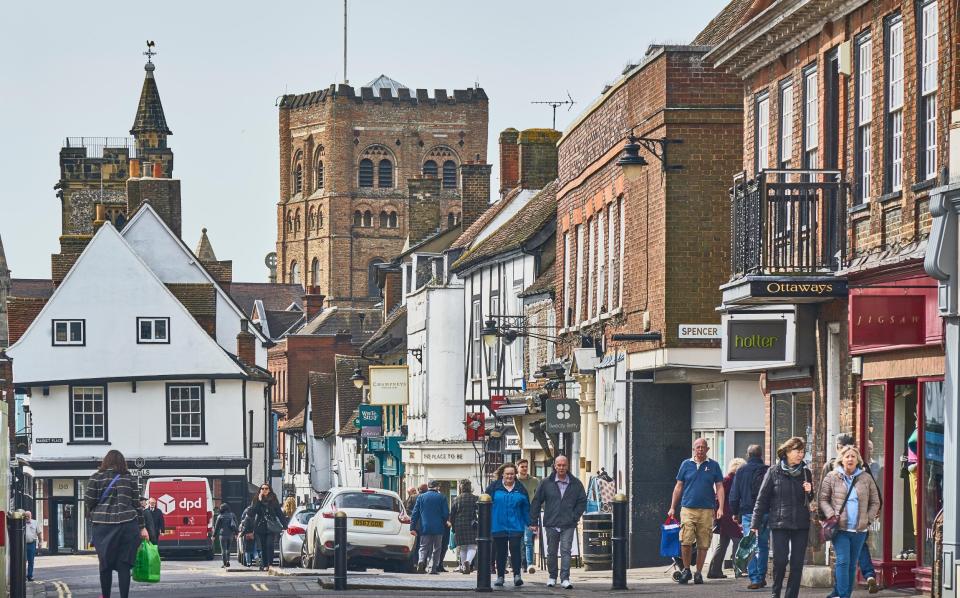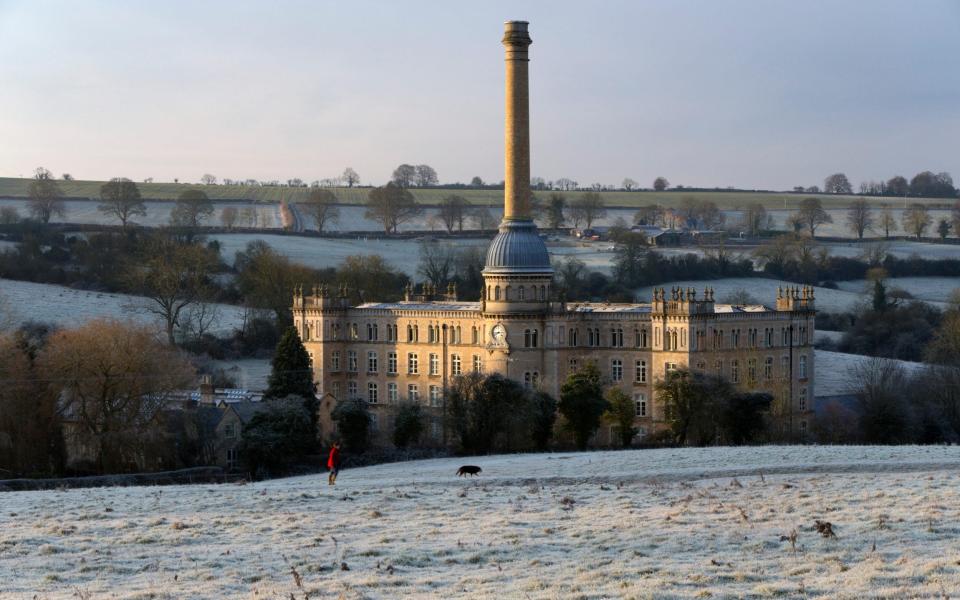The best places to live for buyers moving out of London

The property market is firmly in slowdown mode, but even as the pandemic slips into the past tense the great exodus of Londoners shows few signs of slowing down.
Last year they bought more than 80,000 homes beyond the M25, more than in 2019 and almost as many as the 100,000 purchased in 2021 when the market was in overdrive. These Londoners were responsible for one in 14 purchases outside the capital – and a record 28pc were by first-time buyers.
With home-working still a reality for many, Aneisha Beveridge, of Hamptons, who carried out the research, believes this trend will continue into 2023. And while last year the average distance moved was 34 miles, Beveridge suspects this boundary will stretch further as buyers seek value for money further afield.
Using data from estate agent Savills, we found the best places to live within a feasible daily commute of London, with the strongest track records of price growth – and therefore the potential to ride out the economic headwinds to come.
Small cities
Not everyone who plans to leave London has had their fill of city life. The capital’s house prices have driven out many who dearly love it; others still want the vibrancy and buzz of urban life, but just scaled down.
There are nine cities within a 90-minute train ride of London, of which the most expensive is St Albans. Its location 20 miles north of London, with a half-hour commute, and its very smart city centre, means its average prices are almost at London levels – £714,749, according to Savills. St Albans also recorded the strongest price growth of the cities around London, up 6.4pc between 2021 and 2022, followed by Chelmsford.
A track record of rising house prices is one way to assess the strength of a local market. The other is transaction levels.

Between 2021 and 2022 all small cities saw sales fall substantially as the market became increasingly anxious (and because 2021 saw an artificial uptick due to the stamp duty holiday). Those cities where sales held up best included Canterbury (down 8pc) and Norwich (down 15pc).
Anna Bloomer and Gavin Murrison swapped a flat in Greenwich, south-east London, for a five-bedroom house in St Albans in 2021.
They left London because, quite simply, they were priced out. They chose the Hertfordshire cathedral city because of its commute for Murrison, 43, a software developer, and good schools for their daughter Emi, who is five.
The couple sold their flat for £485,000, and their house in St Albans cost £793,000. Bloomer, 45, is aware that they have bought into a notoriously expensive commuter hotspot, but points out that buying a similar property in London would have cost millions. She also feels that it makes a safe investment. “Prices don’t tend to drop here,” she says. “You have to put the money in but you are likely to be OK getting it back.”
While not quite at St Albans levels of chi-chi-ness, Norwich has become a noticeably hipper option in recent years. St Giles Street in the city centre is full of cute cafés, boutiques, artisanal food stores and bistros. Norwich also offers history, buzz, culture, and easy access to the coast and the Norfolk broads.
The profile of this Norfolk city had started rising before the pandemic. “What really changed everything was working from home,” says Jamie Moore of Winkworth estate agents. “People felt we were a little too far for an everyday commute, but now it is a no-brainer.”
Market conditions in 2023 make the idea of continued price growth unlikely, but Moore thinks there will be activity from downsizers who have finally been persuaded to move on by rising energy costs.
And, for first-time buyers priced out of London, costs in Norfolk will be a huge attraction: a smart two-bedroom home in the city centre would cost about £250,000 to £300,000, and a three-bedroom house within walking distance of the city centre roughly £400,000.
Rural idylls
There are seven Areas of Outstanding Natural Beauty within striking distance of London. The most high-end of those are the Cotswolds, where you might be forgiven for believing all the locals hold a Soho House membership and a pair of spotless Le Chameau boots for when they venture out of the Range Rover.

Jenny and Geoff Holliday made the move from north London to Chipping Norton in 2020. “I know what people think of it and you can really spot who is down from London for a mini-break, but ‘Chippy’ is actually an ordinary market town,” says
Mrs Holliday, 45. “We have seen Jeremy Clarkson in the pub, but that’s about it.”
She and Mr Holliday, 48, met in 2016 and moved into his two-bedroom flat, but quickly started to dream of moving out. Since both are self-employed they were free to live wherever they wanted, and they agreed to move beyond the commuter belt.
Mr Holliday, a wayfinding master planner, suggested the Cotswolds. “We decided to go and have a look around and see a couple of houses, and we found the perfect house – that was it,” says Mrs Holliday, a business coach and founder of Freelance Feels. They sold their flat for £410,000 and upsized to a five-bedroom Victorian terrace, which cost £480,000.
Two years on from the move Mrs Holliday is delighted with her new life. “Do I miss London? Not really,” she says. “It feels weird to say that because I thought I’d yearn for it, but when I go back it just seems so concrete.”
While the Cotswolds grab the headlines, it is actually the Surrey Hills, with its great London train links, that is the most expensive AONB to call home according to Savills’ research. Average prices passed the £1m mark in the past year to hit £1.08m, up 14.9pc.
But in terms of longer-term price growth the Cotswolds is the outstanding performer, with prices up 35pc since 2017 to an average £596,000.
Price growth has been slower in Dedham Vale, on the Essex/Suffolk borders – up just 9pc since 2017 to an average of £599,000. But this slow burn could mean that there is less chance of a sharp drop back down to earth during 2023 and 2024 compared to areas which went crazy during the pandemic.
In its favour is its natural beauty – this is, after all, the landscape which inspired John Constable. It is known for its picture-postcard villages such as Dedham, East Bergholt and Nayland, as well as the excellent country town of Manningtree, with its high performing schools and access to the coast.
Tom Orford, of Savills, believes that part of the reason Dedham Vale hasn’t seen stellar price growth is that, by local standards, it is already an expensive option – a four-bedroom period house in one of those pretty villages would cost £850,000 to £1m.
The other factor mitigating against Cotswolds levels of buyer frenzy is its lack of profile. “Most [Londoners] moving here seems to have some sort of family connection,” says Orford. “I think that it was a very unfashionable county, seen as too far from London and not as attractive as places like Surrey.”
Vibrant towns
Many buyers feeling overwhelmed by urban life but not quite ready for the sticks opt for a lively town. In the past year, the town with the strongest price growth within two hours of London was Rothwell, 15 miles from Northampton. Prices jumped 17pc during the year, to an average of £236,000, according to Savills.
Historically, Northamptonshire has not been one of the counties attracting swathes of buyers out of London. But over the past two years James Smith, of Henderson Connellan estate agents, said that has changed. “We have had more and more buyers coming from the South during the pandemic,” he says.
What these buyers find in Rothwell is a working market town with a bustling, useful town centre, good schools, plenty of good neighbourhood restaurants, good transport links – fast trains to London from nearby Kettering take around three quarters of an hour – and affordable stone cottages, Victorian houses and new-builds.
“I think this must be the cheapest place to buy which is within an hour of London,” says Smith.
It is certainly not hip, but it is close to slightly buzzier locations like Cambridge and Market Harborough for days out.
After what Smith describes as an “incredible” couple of years prices in Rothwell have started to deflate. “We have seen about a 5pc correction so far, but most things have gone up by 20pc in two years so that is not as bad as it sounds. The market is normalising.”
Coastal towns also performed particularly strongly in the research. In West Mersea, Essex, prices increased 13pc in the past year, to an average price of £476,000. In Hythe, Kent, prices rose by 14pc to £438,000.
In the longer term the best price performer was Deal, also in Kent, where prices have grown 46pc since 2017, to stand at an average £370,000.
Atherstone in Warwickshire; Stapleford, Nottinghamshire; and Margate, Kent, also recorded price growth of above 40pc.
Sales volumes have dropped off across the board over the past year – although 2021’s levels were skewed by the stamp duty holiday. Those holding up best include Folkestone, Kent, even though sales volumes are down 22pc year on year, and Hythe, down 29pc.

When Stephen Wright visited Deal as a teenager his verdict was fairly damning. “It seemed like one of those places which hadn’t changed since the 1950s, or 1850s even,” he says. Wright, now 57, didn’t give the area another thought until his parents retired there. “I started visiting them and I really fell in love with it, the charm, the beautiful architecture, the sea,” he says.
When Wright received an inheritance he decided – “on a whim” – to invest it in a four-bedroom Georgian townhouse. It cost £445,000, an “extortionate” amount in the mid-noughties (it is now worth north of £1m). His parents moved in, and rented out their home to give them an income.
The arrangement worked until the start of the pandemic. Wright was renting a flat in Bloomsbury, central London, and decided to move down to Deal to escape ghost town London and help his parents. Almost three years on he has no plans to leave.
The town he knew as a teenager has changed hugely.
“More and more arty types and hipsters have started coming down, it has got the hipster cafés and the vegan whatevers, but it is still quite sleepy,” he says. “If Margate is like Shoreditch, then Deal is like Islington.
“It has got a very genteel air. And everyone who comes here falls in love with it.”

 Yahoo Finance
Yahoo Finance 